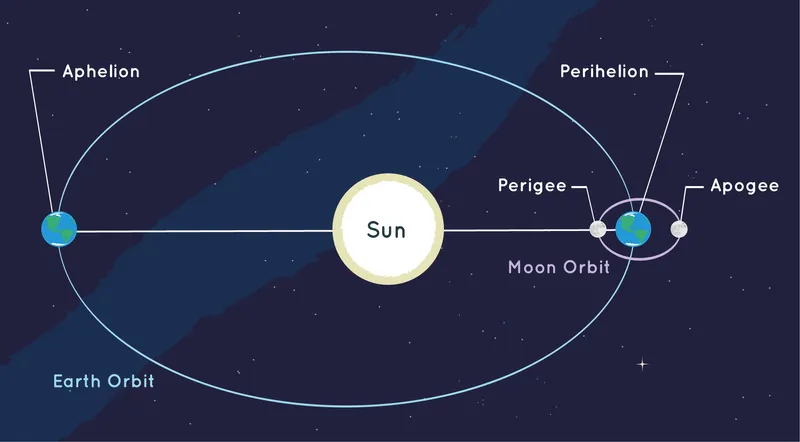WASP-107 b is a 'warm Neptune' exoplanet with a low density akin to a toasted marshmallow, so much so that it had left astronomers puzzled, until new discoveries were made using the James Webb and Hubble Space Telescopes.
The marshmallow planet seemed to defy standard theories of planet formation and evolution: how could it possibly be so puffy?
Over three-quarters the volume of Jupiter and less than one-tenth the mass, WASP-107 b is one of the airiest, least dense exoplanets ever discovered.
And while puffy planets are not uncommon, most of the ones that have been found so far are hotter and more massive, and so easier to explain.

Getting to the core of WASP-107 b
Two teams of astronomers used data from the James Webb Space Telescope combined with previous studies by Hubble to conclude that the interior of WASP-107 b must be hotter than expected.
The high temperature is explained by tidal forces that stretch and pull the planet, and could be the answer to a key mystery in exoplanet studies.
Data shows an unexpected lack of methane in WASP-107 b's atmosphere, which leads the astronomers to infer the exoplanet must be hotter and its core more massive than initially thought.
The problem with the puffy planet
"Based on its radius, mass, age, and assumed internal temperature, we thought WASP-107 b had a very small, rocky core surrounded by a huge mass of hydrogen and helium," says Luis Welbanks from Arizona State University, lead author on a paper published in Nature.
"But it was hard to understand how such a small core could sweep up so much gas, and then stop short of growing fully into a Jupiter-mass planet."
If WASP-107 b had more of its mass in its core, its atmosphere should have contracted as the planet cooled slowly after its formation, and so the planet should be smaller.
WASP-107 b orbits its star at a distance of 5 million miles (8 million km), which is only one-seventh the distance between Mercury and the Sun.
Yet it still doesn't receive enough heat from the star to explain why it's so puffy and inflated..
"WASP-107 b is such an interesting target for Webb because it’s significantly cooler and more Neptune-like in mass than many of the other low-density planets, the hot Jupiters, we’ve been studying," says David Sing from Johns Hopkins University, lead author on a parallel study also published in Nature.
"As a result, we should be able to detect methane and other molecules that can give us information about its chemistry and internal dynamics that we can’t get from a hotter planet."

Studying WASP-107 b's interior
Webb studied the gases present at WASP-107 b using transmission spectroscopy, which identifies gases in a planet's atmosphere based on how those gases affect starlight passing through it.
Data from Webb’s NIRCam (Near-Infrared Camera), MIRI (Mid-Infrared Instrument), and Hubble’s WFC3 (Wide Field Camera 3) was used by Welbanks’ team, while Sing's team used Webb’s NIRSpec (Near-Infrared Spectrograph).
The data enables detection and measurement of a range of molecules including water vapour, methane, carbon dioxide, carbon monoxide, sulphur dioxide and ammonia.
And the data shows a distinct lack of methane WASP-107 b’s atmosphere.
"This is evidence that hot gas from deep in the planet must be mixing vigorously with the cooler layers higher up" says Sing.
"Methane is unstable at high temperatures. The fact that we detected so little, even though we did detect other carbon-bearing molecules, tells us that the interior of the planet must be significantly hotter than we thought."

Tidal heating
WASP-107 b has a slightly elliptical or egg-shaped orbit, which means the distance between the star and planet changes constantly over the 5.7 days it takes to complete one orbit.
This means there's a constant gravitational tug of war causing the planet to be stretched and heated up. This is known as tidal heating.
"If we know how much energy is in the planet, and we know what proportion of the planet is heavier elements like carbon, nitrogen, oxygen, and sulphur, versus how much is hydrogen and helium, we can calculate how much mass must be in the core," says Daniel Thorngren from JHU.
It seems WASP-107 b's core is at least twice as massive as originally estimated.
"Webb data tells us that planets like WASP-107 b didn’t have to form in some odd way with a super small core and a huge gassy envelope," says Mike Line from ASU.
"Instead, we can take something more like Neptune, with a lot of rock and not as much gas, just dial up the temperature, and poof it up to look the way it does."

